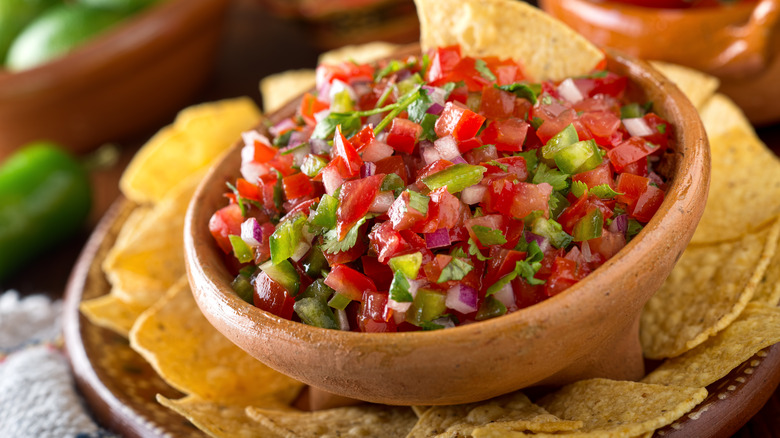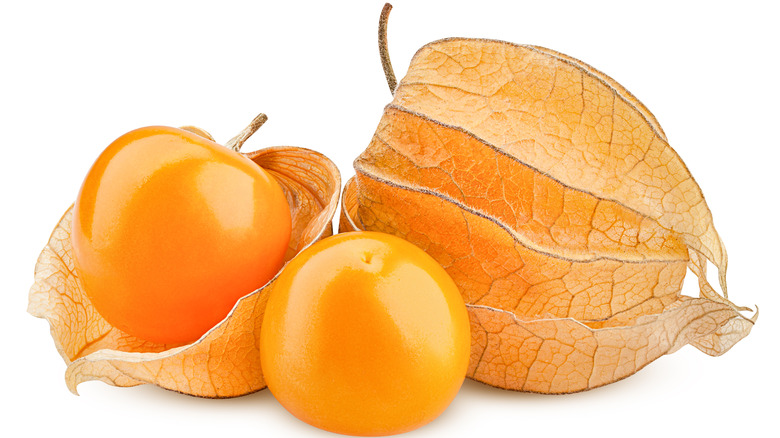The Unconventional Fruit To Try In Your Next Batch Of Salsa
While tortilla chips, Super Bowl Sunday, and party buffet tables may come to mind when we think of salsa, the versatile little condiment wears an arsenal of delicious hats. From fresca and chunky to roasted and puréed to creamy and fiery, the options for preparing this tomato-based topper are endless.
Adding different ingredients to a basic salsa to switch things up a little is not a new concept. Mangoes have been a mainstay for many salsas garnishing plates of fish, and peaches and strawberries have their moment in salsa at every summer backyard barbecue. Daredevils and adrenaline junkies love playing around with varying degrees of peppers on the Scoville Scale, and very few shun the addition of the beloved avocado.
But if you're searching for a new, slightly obscure addition to your next batch of salsa, there is a more unconventional fruit at the ready. Whether you're looking for something to garnish a grilled chicken, a new fish taco topper, or something fun to dip your chip in, there's a tropical berry that will add just a hint of sweetness with a zesty bite.
A berry different type of tomato
Cape gooseberries are in the same family as tomatoes, making them a no-brainer addition to a salsa, and they're mild in flavor with a sweet but tangy and tart kick. These lesser-known fruits are a sunset-golden shade of orange and about the size of a grape underneath a fine, papery husk. Though it's easy to confuse, they are not the same as the gooseberry fruit, which is in the currant family and can be found in cooler Northern regions. Cape gooseberries, on the other hand, are closely related to the tomatillo and mostly grow in warmer regions such as South and Central America, Australia, India, and South Africa.
To make your unconventional salsa with cape gooseberries, Claudette Zepeda, former Executive Chef/Partner of El Jardín, told Food & Wine to treat them just like you would a tomatillo: Chop them up and add them to your batch, or give them a char, as they can be enjoyed either raw or cooked. Since their flavor is unique and has been likened to everything from strawberries to vanilla to the classic salsa staple tomato, they are sure to level up your next dip. (For an extra spicy-sweet kick, Zepeda suggests throwing them in alongside pineapple and habaneros.)
One important thing to note — cape gooseberries are toxic to humans if eaten unripe (per North Carolina State University). They continue to ripen after being picked, and the telltale sign that they're ready to consume is if the husk is dried and has lost its color. But if your cape gooseberries are in the clear, throw them into your next salsa for a twist that will keep your party guests guessing — they're a delicious addition that's hard to place.

